ULV1200 Twin
Truck Mounted ULV Cold Fogger Machine 100Lt
DocumentsEquipped with an 18 HP Vanguard engine (USA-origin) and a roots-type blower.
The system comes with a 100-liter chemical tank and four nozzles as standard.
(2 nozzles or sewer treatment apparatus are optional.)
Capabilities:
✔ 15 µm Cold Fogging
✔ 30 µm ULV
✔ 55 µm Mist Blower
(Can be used efficiently in three different application areas.)
Description
Description
The ULV1200 Twin is a vehicle-mounted ULV sprayer that uses water-based fogging technology. It is specifically designed to combat flying adult pests with contact-effect pesticides. Thanks to its special fogging method, the device consumes very little pesticide, ensuring both efficiency and cost-effectiveness. For optimal performance, it is recommended to use 60- or 100-liter chemical tanks. The World Health Organization (WHO) recommends spraying at an average consumption of 500 ml/min for mosquito and housefly control. According to WHO’s consumption recommendation, the ULV1200 Twin model with a 100-liter chemical tank can spray continuously for 3.5 hours with a mixture of 98.5 liters of water and 1.5 liters of pesticide. If the spraying area covers a very large field, it can spray continuously for 12 hours with refills.
This device is designed to operate without failure. It can continue to function and perform spraying even if the battery energy is depleted or the remote control is broken.For those seeking a spraying machine that delivers uninterrupted biocidal control with unmatched reliability, the ULV1200 Twin is the perfect choice. Extra features like electronic boards or fingerprint sensors add little value to a spraying machine but raise the chance of breakdowns. The ULV1200 Twin avoids this by combining high-quality components with a simple, purpose-built design for continuous, reliable spraying.
The ULV1200 Twin model operates according to cold fogging (0–30 µm), ULV (30–50 µm), Mist (50–100 µm) spraying ranges, and is designed for both contact-effect applications and residual (long-lasting) spraying. The ULV1200 Twin is preferred for controlling flying pests such as mosquitoes, houseflies, and black flies. Effective spraying requires particles sized according to the target pest. For instance for mosquito control the World Health Organization (WHO) specifies a maximum droplet size of 20 µm. Meeting this requirement is technically challenging and demands expertise, as not every spraying machine can achieve droplets this small. If mosquito control is the goal, the machine must be capable of spraying particles smaller than 20 µm in diameter.
Some low-cost machines on the market use vacuum cleaner motors with funnel-shaped nozzles. These 220V motors cannot generate sufficient air pressure to produce droplets at the required micron size, resulting in reduced pesticide effectiveness and inefficient biocidal control. In addition, such motors often fail after liquid contact or require frequent maintenance, such as carbon brush replacement. Machines that do not meet technical standards interrupt scheduled spraying activities, disrupting the control cycle. For reliable, long-term use, vehicle-mounted ULV machines should always be equipped with Roots-type blower air pumps. These pumps provide strong, stable airflow and typically operate for 10 years without failure.
Advantages;
✔ The ULV1200 Twin is engineered for uninterrupted performance. Its stainless-steel tanks allow spraying to continue even if the remote control fails or the battery runs out. Designed for long-term reliability, ULV1200 Twin models typically operate without failure for at least two years. With simple preventive maintenance—such as replacing hoses and filters—the service life extends to 10 years or more. This makes the ULV1200 Twin not only a highly durable machine but also a secure investment, offering a clear advantage in terms of lower depreciation costs.
✔ The device has one main regulator that adjusts the flow rate and micron size for all four nozzles. Additionally, each nozzle has four independent sub-regulators. While the micron size for all nozzles can be adjusted at once from the main regulator, it is also possible to spray with different micron sizes for each of the four nozzles via the sub-regulators. For example, the two nozzles on the right can be set to 30 µm for housefly control, and the two nozzles on the left can be set to 20 µm for mosquito control. Simultaneously controlling pests of different sizes saves time, reduces labor costs, and minimizes pesticide use.
✔ The system features a direct-coupled connection with a fiber-reinforced rubber coupling, providing a longer service life than belt-driven alternatives. By eliminating the high heat and power loss caused by belt friction, it ensures greater efficiency and fuel savings.
✔ A spare parts kit is shipped with each machine. It includes coupling rubber, engine spark plug, oil, air and fuel filters, blower air filter, pesticide filter, solenoid valve, spare hoses, and quick-connect equipment.
✔ The nozzle can be manually rotated to the desired position. It has a 360° horizontal (left-right) and 360° vertical (up-down) rotation angle. All nozzles can be rotated simultaneously from the bottom, and each of the four nozzles can independently rotate 360° left and right. This allows spraying with a wider coverage width, enabling contact-effect pesticides to more easily reach harmful pests and increasing spraying efficiency.
✔ The device is equipped with an 18 Hp gasoline engine (USA-origin Vanguard). This engine is one of the highest quality and least failure-prone engine used in industry. It also has the largest global service network. Obtaining spare parts and service is easier compared to other engine brands. Vanguard engines have a 3-year international warranty. If the user fills out a personal information form via the QR code on the engine, they can gain an additional 1-year warranty, extending the total warranty period to 4 years.
✔ The device is equipped with a roots type blower air pump. These two-lobed positive displacement pumps are the longest-lasting and highest performing pumps used in vehicle-mounted ULV devices, capable of spraying at the smallest micron sizes. Centrifugal pumps’ impellers break, and engines made with vacuum cleaner motors powered by generators burn out or deform quickly. If users aim for the lowest failure rate and high performance in vehicle-mounted ULV devices, they should definitely prefer spraying machines equipped with roots type blower equipment.
✔ The machine is guaranteed against manufacturing defects for 2 years and includes a 10-year spare parts availability.
✔ The chassis dimensions are suitable for all double cabin vehicles.
✔ It is licensed by the Turkish Ministry of Agriculture and Forestry.
✔ Two nozzle head, and a 5-meter long ULV sewer treatment apparatus are optionally available.
Frequently Asked Questions ;
What should be considered when purchasing a spraying machine?
When purchasing a spraying machine, the primary criterion is the uninterrupted continuation of periodic spraying activities. For example, mosquito control is generally carried out in 8-day cycles, and during this period, daily spraying must be done regularly considering the larval stage. Since the exact timing of larval deposition from previous mosquitoes cannot be known, the entire population is controlled by daily spraying for the first 8 days. Then, control is maintained with repeated periodic spraying every 8 days. This approach ensures significant savings in biocidal chemical consumption, effectively controlling the entire population.
However, if the spraying machine frequently breaks down, this routine is disrupted, and spraying activities must be restarted daily from scratch. This causes significant losses in both time and chemical costs.
Therefore, when choosing a spraying machine, instead of focusing solely on price-performance ratio; robust, durable, low-risk of break, simple, and purpose-appropriate machines should be preferred. Additionally, purchasing from manufacturers with a proven track record of easily and promptly supplying spare parts and providing after-sales support will be far more efficient in the long run.
In biocidal control, spraying machines are typically purchased once and used for about 10 years. However, biocidal chemicals must be regularly supplied every season for many years. Therefore, the correct equipment choice directly impacts chemical costs in the long term. To save on chemical use and conduct effective control, machines that can spray chemicals at the micron size most suitable for the target pest, have minimal risk of breakdown, and are made with quality components should be preferred. Such machines provide significant savings in labor, time, and chemical consumption, yielding successful biocidal control results in the long term.
What should be the droplet size according to the target pest?
For the control of small flying insects like mosquitoes, the World Health Organization (WHO) has set a standard that the diameter of particles sprayed using the cold fogging method should be at most 20 microns (µm). The main purpose of this approach is to prolong the suspension time of sprayed droplets in the air, to increase their drift distance, and enhance the likelihood of effective biocidal particles reaching the target pests through contact.
For controlling black flies and other medium-sized insects, the WHO recommends using droplets of 30 microns (µm) in diameter via the ultra-low volume (ULV) spraying method. This method ensures the appropriate dosage of insecticide reaching the target flies effectively and eliminating medium size insects.
In the case of large pests such as locusts, ticks, and stink bugs, sprayed particle diameters should range between 50-100 microns (µm) using the Mist Blower method. This allows the application of biocidal chemicals in sufficient doses by matching the droplet size to the pest’s physical size, producing effective results. There are two main reasons for preferring droplet sizes of 50-100 microns (µm) in Mist Blower applications:
- ✔ Larger droplets are needed to effectively neutralize larger sized insects,
- ✔ In contact or systemic based spraying activity, to prevent the excessive drift of droplets in the wind. With Mist Blower method, insecticide can travel up to approximately 30 meters and settles within 90 seconds; reaching the ground as large droplets. Thus, even if a month passes after application, insects consuming insecticide residues on the ground are eliminated through residual effects.
This method is ideal for source control of large pests such as larvae, ticks, and cockroaches found in parks, gardens, garbage areas, water channels, and residential surroundings.
For the control of larvae, bacteria, and parasites, the Garden Sprayer method, which uses droplet sizes between 100-300 microns (µm), and systemic (residual) insecticides should be preferred. The machine is equipped with a 50-meter hose gun, allowing both short and long-range spraying. This enables effective spraying and disinfection applications in various areas and conditions. When the garden sprayer mode is activated, sprayed droplet diameters range between 100 and 300 microns. This feature offers a wide application scope, from systemic fly control in slaughterhouses to larval control in water paddles. It is also successfully used in disinfecting animal habitats from viruses and parasites, and effectively sanitizing garbage containers.
For successful and effective biocidal control, selecting appropriate particle sizes according to the pest species and strictly adhering to the application criteria set by the World Health Organization is essential. The WHO guide titled “A practitioner’s guide” provides detailed spraying criteria. Consulting expert specialists also contributes to successful biocidal control.
Incorrect micron sizes and non-compliant applications lead to failure in pest control, unnecessary loss of time, and wasted chemicals.
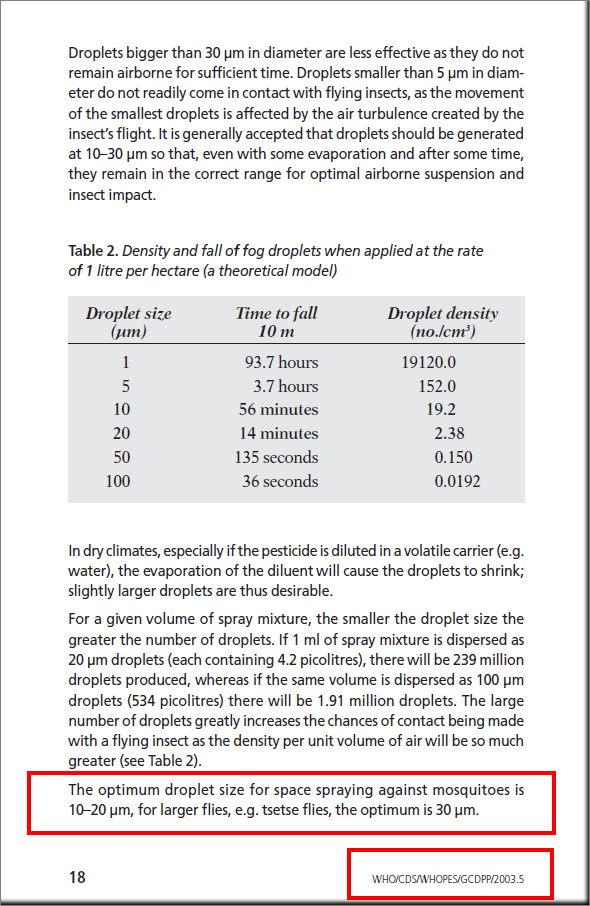
How should biocidal control be conducted?
Wind direction, wind speed, air temperature, high pressure, low pressure, and other atmospheric conditions directly affect spraying activities. In this context, detailed spraying criteria can be found in the World Health Organization (WHO) guide titled “A practitioner’s guide.” Additionally, consulting expert specialists in the field will ensure successful biocidal control.
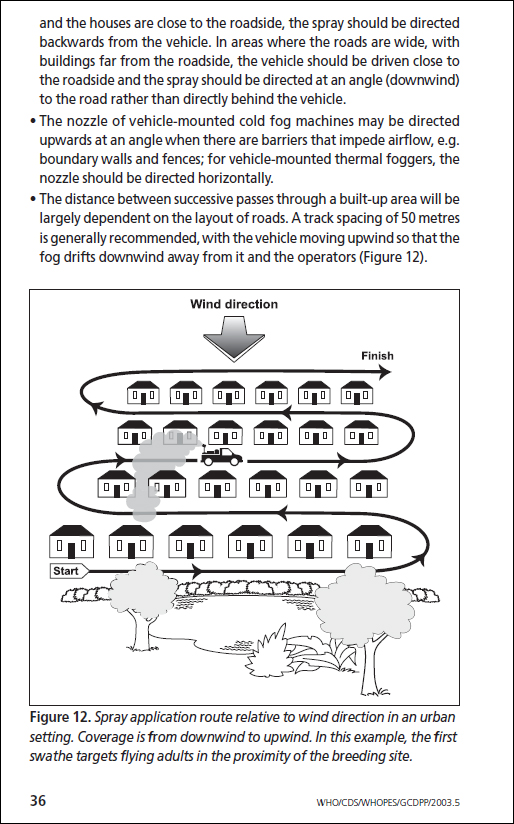
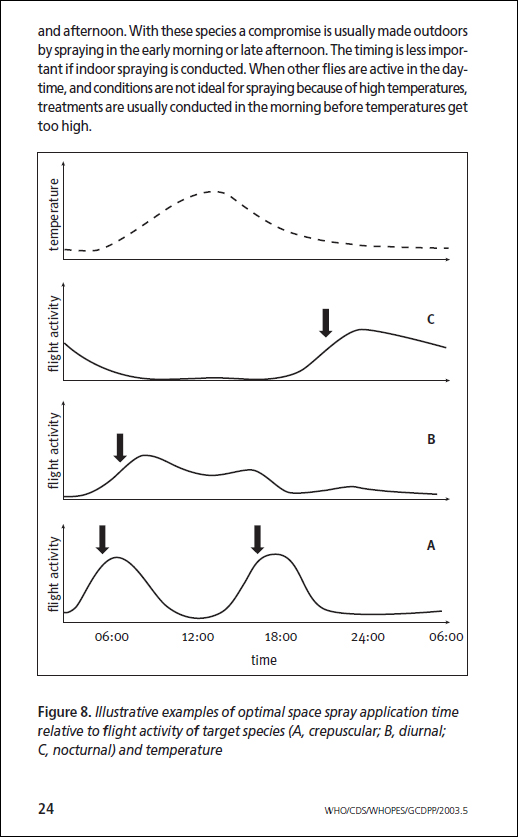
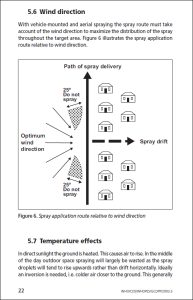

What is the criterion for cold fogging?
The cold fogging method is defined by the World Health Organization with a droplet size range of 0-30 microns (µm). In this method, the chemical substance in liquid form is sprayed as droplets sized 0-30 microns (µm). It is called “cold” because the process involves spraying as fog without using heat, by exposing the liquid to high air flow through a vortical type nozzle.
What is the ULV criterion?
The U.L.V. (Ultra Low Volume) method is defined by the World Health Organization with a droplet size range of 30-50 microns (µm). In this method, the chemical substance in liquid form is sprayed as droplets sized 30-50 microns (µm). The liquid is sprayed at low volume without using heat, by exposing it to high air flow through a vortical type nozzle. The term Ultra Low Volume has been adopted in the literature as “low volume spraying.”
What is the Mist Blower criterion?
The Mist Blower method is defined by the World Health Organization with a droplet size range of 50-100 microns (µm). In this method, the chemical substance in liquid form is sprayed as droplets sized 50-100 microns (µm). The liquid is sprayed at high volume without using heat. The term Mist Blower has been adopted in the literature as “high volume spraying.”
What is the Garden Sprayer criterion?
The Garden Sprayer method is defined by the World Health Organization with a droplet size range of 100-300 microns (µm). In this method, the chemical substance in liquid form is sprayed as droplets sized 100-300 microns (µm). The liquid is sprayed at high volume without using heat. The term Garden Sprayer has been adopted in the literature as “handgun spraying.”
What is the Thermal Fogging criterion?
The Thermal Fogging method is defined by the World Health Organization with a droplet size range of 1-100 microns (µm). In this method, the chemical substance in liquid form is sprayed as droplets sized 1-100 microns (µm). The liquid chemical is vaporized at a high temperature (400°C) and then sprayed as a dense fog (aerosol) cloud when it comes into contact with cold air. The sprayed particles are not transparent like in water-based spraying but appear as dense white smoke. The thermal fogging method does not burn the chemical or reduce its effectiveness. On the contrary, it provides an application that is 12 times more effective and efficient compared to water-based spraying. But because it obstructs visibility in traffic, its use on highways requires permission from local authorities. However, it is not subject to permission in private properties, rural areas, and residential neighborhoods. The term Thermal Fogging is known in the literature as “oil-based spraying.”
Technical Information
Additional information
| Engine | 18 Hp Briggs & Stratton, 570cc, gasoline, 2 cylinders, 4 stroke, air cooled, electric started |
|---|---|
| Pump | Roots type air blower, 2 lobes, positive displacement rotary type, 400 cfm, 3600 rpm |
| Connection Type | Direct drive with carbon fibre reinforced coupling rubber |
| Nozzle | 4 nozzles, 360° |
| Spray Droplet Sizes | 15, 30, and 55 µm sizes in test report. Adjustable from 15 to 55 µm in different sizes |
| Chemical Tank | 100 L, stainless steel, consumption 0~60 L/h (Adjustable) |
| Cleaning Tank | 5 L, stainless steel |
| Fuel Tank | 22 L, stainless steel, approx. consumption 2.5 L/h |
| Remote Control | 6 m cable, remote control on/off, engine start/stop, ulv spraying on/off, flush on/off |
| Air Velocity At Nozzle | 172 m/s |
| Noise Level | 93.5 dB (A) |
| Battery type | 12 V, 60 Ah |
| Weight | Empty 200 Kg, Full 327 Kg, Shipping weight 340 Kg |
| Dimensions | 100x120x110 cm, Shipping dimensions 110x140x90 cm (W,L,H) |
| Extra Options | 5 m ulv gun, 2 nozzles, 60 L, Rotating automatic nozzle with remote control operation. |
| Origin | Made in Turkey |
| Warranty | 2 years |
| MOQ | 1 unit |


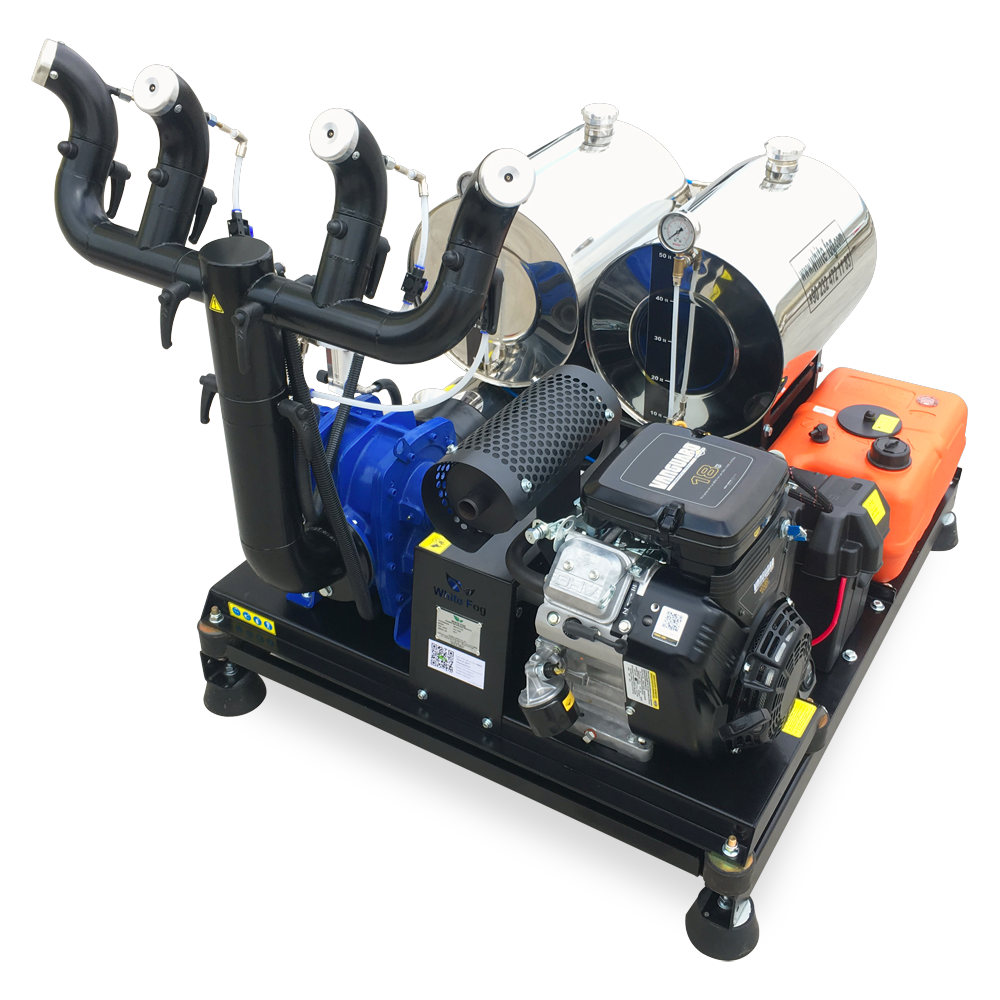
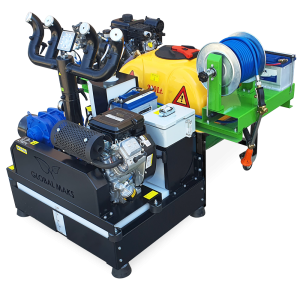
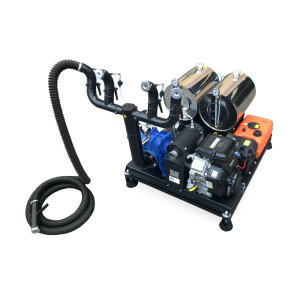
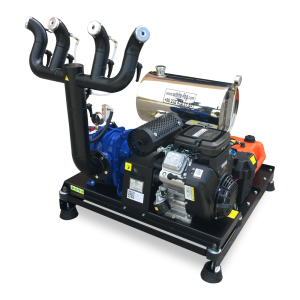
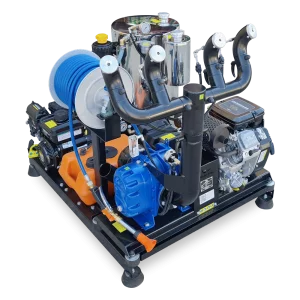
Reviews
There are no reviews yet.